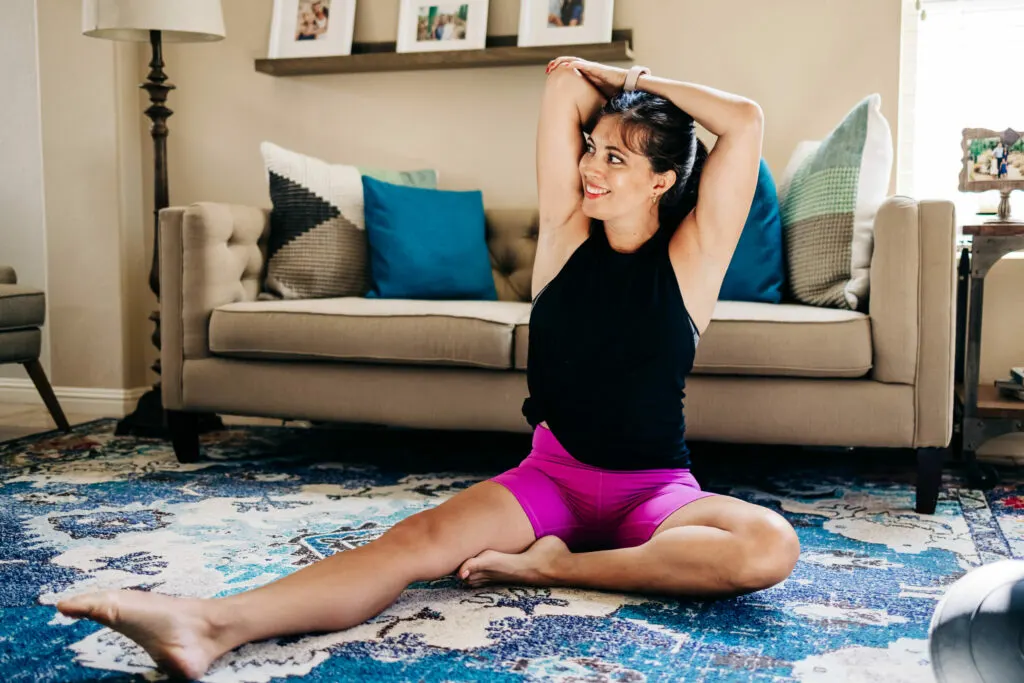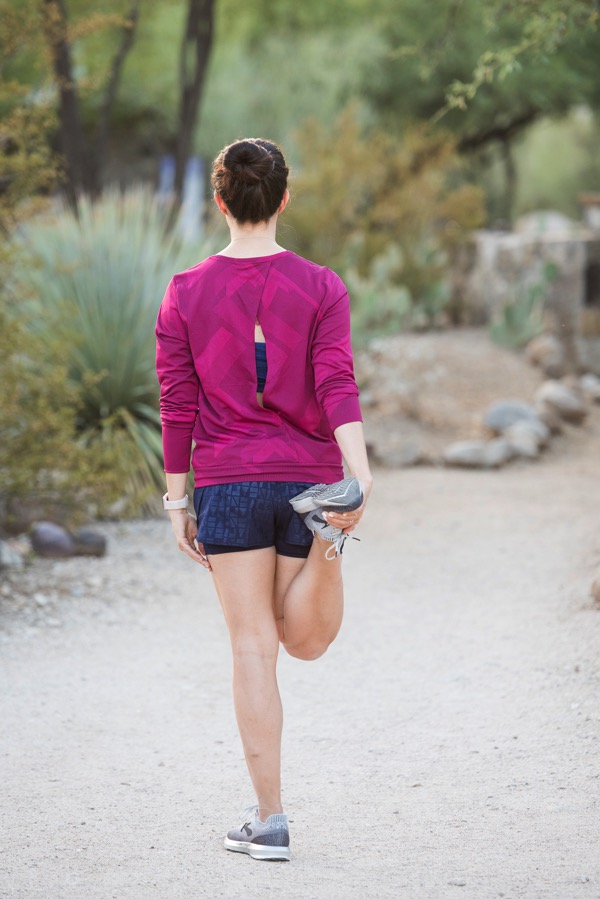Answering the popular question of how long to stretch for a run.
Hello friends! I hope you are well and enjoying the day!
For today’s post, I wanted to ask a common question, especially since it’s the new year and many of my friends out there are getting back into their running routines or starting new ones: how long should you stretch for a run?
Here’s the stretch deal: the science and opinions are mixed. You don’t *need* to stretch, but for many people, they find that it warms them up (prepares the muscles for exercise and increases heart rate and tissue temperature), may make them less likely to injure themselves, and may find that it helps them mentally to get into the game.

How long should you stretch for running?
When it comes to stretching for running, the recommended duration can vary depending on whether you are doing dynamic or static stretching. Typically, dynamic stretching is best done before a run or any type of workout, while static stretching is most effective after a run.
Dynamic Stretch Duration:
Before a run, 5 to 10 minutes of dynamic stretching is usually sufficient in addition to any foam rolling. This type of stretching involves moving your muscles and joints through their full range of motion, which helps warm up the body, increase the heart rate, and increase blood flow to the muscles. It prepares the muscles for the intense activity to come and can help reduce the risk of injury.
I really like dynamic stretching because you work the full range of motion. can help with altered movement patterns because you are stretching muscles that may be tight or underused. It feels good and gives energy before any kind of training!
Duration of static stretching:
After a run, I usually recommend 5 to 10 minutes of static stretching in addition to any foam rolling. This includes stretching for 20 to 30 seconds per muscle group. Static stretching helps loosen muscles, improve flexibility and reduce muscle stiffness after exercise. It helps cool the body, your heart rate will decrease, and it can help promote muscle recovery.
Differences between dynamic and static stretching:
Dynamic stretching is active, with movements such as leg swings and walks that mimic the activity of running. It is designed to increase body temperature, improve range of motion and get the blood flowing.
Dynamic stretching
Some of my favorite dynamic stretches before a run:
Leg swings
Benefits: Improves range of motion, warms up hip flexors.
Steps:
Stand on one leg with the other leg swinging forward and back.
Keep the movement controlled and steady.
Switch sides after 10-15 swings.
Walking Lunges
Benefits: Engages multiple muscle groups, enhances blood flow.
Steps:
Step forward with your left foot, lowering your body into a walk.
Push up and repeat with your right leg.
Continue for 10-12 reps on each leg.
Arm circles
Benefits: Relaxes shoulder muscles, increases upper body range of motion.
Steps:
Stretch your arms out to the sides.
Make small circles, gradually increasing the size.
Perform for 20-30 seconds, then switch directions.
Standing hamstring stretches
Benefits: Stretches the hamstrings!
Steps:
Stand with your feet shoulder-width apart. With your left hand, lean forward and strike toward the right shin or ankle. Stand and repeat on the other side. Alternate for 20-30 seconds.
Static stretching
Static stretching, on the other hand, involves holding a position without movement. It’s more about lengthening the muscles and bringing the body back into a relaxed state, which helps relieve tension and prevent pain.
Calf Stretch
Benefits: Stretches your calf muscles, helps recovery after running.
Steps:
Stand facing a wall, place your hands on it.
Step your left leg back, keeping it straight, and bend your right knee.
Hold for 20-30 seconds, then switch sides.


Quadruple Stretch:
Benefits: Helps stretch the front of the thighs, which can be tight after running
Steps:
Start standing. Bend one leg and reach back for the toes on that side. Bring your knee down, tuck your hips down, and hold onto a wall or bench for balance. Hold for 20-30 seconds, then switch sides.
Hamstring stretch
Benefits: Helps stretch the back of your thighs, enhances flexibility.
Steps:
Sit on the ground, straighten your left leg and reach toward your ankle or toe.
Hold for 20-30 seconds, then switch sides.
Hip Flexor Stretch
Benefits: Opens the hip flexors, which are often tight after running.
Steps:
Kneel on your left knee, right leg in front at a 90-degree angle.
Push your hips forward gently.
Hold for 20-30 seconds, then switch sides.
So tell me friends: how often do you stretch??
Any tips for runners returning to the game?
xoxo
Gina
For more, check out these tips for running faster and 10 core stretches.
